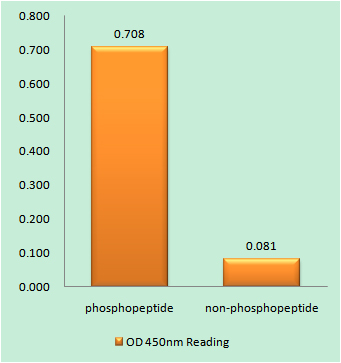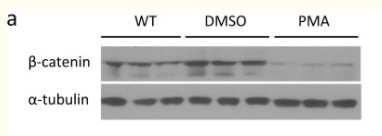
Catalog: KA3064C
Size
Price
Status
Qty.
96well
$330.00
In stock
0
Add to cart


Collected


Collect
Main Information
Reactivity
Human, Mouse, Rat
Applications
ELISA
MW
92kD (Observed)
Conjugate/Modification
Unmodified
Detailed Information
Storage
2-8°C/6 months,Ship by ice bag
MW(Observed)
92kD
Modification
Unmodified
Detection Method
Colorimetric
Related Products
Antigen&Target Information
Gene Name:
CTNNB1 CTNNB OK/SW-cl.35 PRO2286
show all
Other Name:
CTNNB1 ;
CTNNB ;
OK/SW-cl.35 ;
Catenin beta-1 ;
Beta-catenin
CTNNB ;
OK/SW-cl.35 ;
Catenin beta-1 ;
Beta-catenin
show all
Database Link:
Background:
disease:A chromosomal rearrangement involving CTNNB1 may be a cause of salivary gland pleiomorphic adenomas (PA) [181030]. Pleiomorphic adenomas are the most common benign epithelial tumors of the salivary gland. Translocation t(3;8)(p21;q12) with PLAG1.,disease:Activating mutations in CTNNB1 have oncogenic activity resulting in tumor development. Somatic mutations are found in various tumor types, including colon cancers, ovarian and prostate carcinomas, hepatoblastoma (HB), hepatocellular carcinoma (HCC). HBs are malignant embryonal tumors mainly affecting young children in the first three years of life.,disease:Defects in CTNNB1 are a cause of medulloblastoma (MDB) [MIM:155255]. MDB is a malignant, invasive embryonal tumor of the cerebellum with a preferential manifestation in children.,disease:Defects in CTNNB1 are a cause of pilomatrixoma (PTR) [MIM:132600]; a common benign skin tumor.,disease:Defects in CTNNB1 are associated with colorectal cancer (CRC) [MIM:114500].,disease:Defects in CTNNB1 are associated with ovarian cancer [MIM:167000]. Ovarian cancer is the leading cause of death from gynecologic malignancy. It is characterized by advanced presentation with loco-regional dissemination in the peritoneal cavity and the rare incidence of visceral metastases. These typical features relate to the biology of the disease, which is a principal determinant of outcome.,function:Involved in the regulation of cell adhesion and in signal transduction through the Wnt pathway.,online information:Beta-catenin entry,PTM:EGF stimulates tyrosine phosphorylation. Phosphorylation on Tyr-654 decreases CDH1 binding and enhances TBP binding.,PTM:Phosphorylation by GSK3B requires prior phosphorylation of Ser-45 by another kinase. Phosphorylation proceeds then from Thr-41 to Ser-37 and Ser-33.,PTM:Ubiquitinated by a E3 ubiquitin ligase complex containing UBE2D1, SIAH1, CACYBP/SIP, SKP1A, APC and TBL1X (Probable). Its ubiquitination leads to its subsequent proteasomal degradation.,similarity:Belongs to the beta-catenin family.,similarity:Contains 12 ARM repeats.,subcellular location:Cytoplasmic when it is unstabilized (high level of phosphorylation) or bound to CDH1. Translocates to the nucleus when it is stabilized (low level of phosphorylation). Interaction with GLIS2 and MUC1 promotes nuclear translocation.,subunit:Two separate pools are found in the cytoplasm: one is PSEN1/cadherin/catenin complex which anchors to the actin cytoskeleton. The other pool is part of a large complex containing AXIN1, AXIN2, APC, CSNK1A1 and GSK3B that promotes phosphorylation on N-terminal Ser and Thr residues and ubiquitination of CTNNB1 via BTRC and its subsequent degradation by the proteasome. Wnt-dependent activation of DVL antagonizes the action of GSK3B. When GSK3B activity is inhibited the complex dissociates, CTNNB1 is dephosphorylated and is no longer targeted for destruction. The stabilized protein translocates to the nucleus, where it binds TCF/LEF-1 family members, TBP, BCL9 and possibly also RUVBL1 and CHD8. Binds CTNNBIP and EP300. CTNNB1 forms a ternary complex with LEF1 and EP300 that is disrupted by CTNNBIP1 binding (By similarity). Interacts with TAX1BP3 (via the PDZ domain); this interaction inhibits the transcriptional activity of CTNNB1 (By similarity). Interacts with AJAP1, BAIAP1, CARM1, CTNNA3, CXADR and PCDH11Y. Binds SLC9A3R1. Interacts with GLIS2 and MUC1. Interacts with SLC30A9. Interacts with XIRP1 (By similarity). Interacts with PTPRU (via the cytoplasmic juxtamembrane domain).,tissue specificity:Expressed in several hair follicle cell types: basal and peripheral matrix cells, and cells of the outer and inner root sheats. Expressed in colon.,
show all
Function:
negative regulation of transcription from RNA polymerase II promoter, microtubule cytoskeleton organization,embryonic axis specification, cell morphogenesis, cell morphogenesis involved in differentiation, skeletal system development, angiogenesis, blood vessel development, patterning of blood vessels, eye development, gastrulation with mouth forming second, formation of primary germ layer, endoderm formation, cell fate specification, cell fate determination, endodermal cell fate commitment, morphogenesis of a branching structure, cell activation, epithelial to mesenchymal transition, liver development, tissue homeostasis, vasculature development, morphogenesis of an epithelium, immune system development, leukocyte differentiation, regulation of myeloid leukocyte differentiation,negative regulation of myeloid leukocyte differentiation, regionalization, transcription, regulation of transcription, DNA-dependent, regulation of transcription from RNA polymerase II promoter, protein complex assembly, apoptosis,cytoskeleton organization, microtubule-based process, cell cycle, centrosome cycle, cell adhesion, cell-matrix adhesion,cell surface receptor linked signal transduction, intracellular signaling cascade, cell-cell signaling, synaptic transmission, gastrulation, pattern specification process, ectoderm development, glial cell fate determination, sensory organ development, endoderm development, midgut development, heart development, protein localization, cell death,cell proliferation, response to endogenous stimulus, response to hormone stimulus, axis specification, embryonic pattern specification, negative regulation of biosynthetic process, positive regulation of biosynthetic process,anterior/posterior axis specification, dorsal/ventral axis specification, anterior/posterior pattern formation,dorsal/ventral pattern formation, proximal/distal pattern formation, positive regulation of signal transduction, glial cell differentiation, response to organic substance, response to inorganic substance, response to metal ion, regulation of specific transcription from RNA polymerase II promoter, positive regulation of specific transcription from RNA polymerase II promoter, positive regulation of macromolecule biosynthetic process, negative regulation of macromolecule biosynthetic process, regulation of glycoprotein biosynthetic process, positive regulation of glycoprotein biosynthetic process, positive regulation of macromolecule metabolic process, negative regulation of macromolecule metabolic process, regulation of protein kinase cascade, positive regulation of gene expression,negative regulation of gene expression, positive regulation of cell communication, positive regulation of protein kinase cascade, regulation of heparan sulfate proteoglycan biosynthetic process, positive regulation of heparan sulfate proteoglycan biosynthetic process, programmed cell death, glial cell proliferation, Schwann cell proliferation,mesenchymal cell development, response to organic cyclic substance, Wnt receptor signaling pathway, vesicle-mediated transport, death, morphogenesis of embryonic epithelium, cell-cell adhesion, negative regulation of transcription, transmission of nerve impulse, developmental maturation, glial cell fate commitment, cell cycle process,biological adhesion, hemopoiesis, lymphocyte differentiation, T cell differentiation, regulation of ossification, respiratory tube development, lung development, embryonic limb morphogenesis, steroid hormone receptor signaling pathway,androgen receptor signaling pathway, intracellular receptor-mediated signaling pathway, regulation of epithelial cell differentiation, positive regulation of epithelial cell differentiation, forebrain development, regulation of centriole-centriole cohesion, pancreas development, microtubule organizing center organization, negative regulation of cellular biosynthetic process, positive regulation of cellular biosynthetic process, cell-substrate adhesion, regulation of chondrocyte differentiation, negative regulation of chondrocyte differentiation, regulation of gene-specific transcription, regulation of microtubule-based process, cellular component morphogenesis, regulation of organelle organization, T cell differentiation in the thymus, response to cytokine stimulus, cellular protein localization,appendage morphogenesis, limb morphogenesis, embryonic appendage morphogenesis, embryonic forelimb morphogenesis, embryonic hindlimb morphogenesis, embryonic arm morphogenesis, forelimb morphogenesis, hindlimb morphogenesis, arm morphogenesis, tube morphogenesis, tube development, gliogenesis, T cell activation, regulation of cell proliferation, odontogenesis of dentine-containing tooth, odontogenesis, homeostatic process, muscle cell differentiation, embryonic digit morphogenesis, regulation of sulfur metabolic process, camera-type eye development,extracellular structure organization, positive regulation of gene-specific transcription, regulation of MAPKKK cascade,positive regulation of MAPKKK cascade, response to estrogen stimulus, macromolecular complex subunit organization,cell fate commitment, leukocyte activation, myoblast differentiation, regulation of transcription, bone resorption,negative regulation of cell differentiation, positive regulation of cell differentiation, regulation of myeloid cell differentiation, negative regulation of myeloid cell differentiation, regulation of osteoblast differentiation, positive regulation of osteoblast differentiation, regulation of osteoclast differentiation, negative regulation of osteoclast differentiation, negative regulation of transcription, DNA-dependent, positive regulation of transcription, DNA-dependent, negative regulation of nucleobase, nucleoside, nucleotide and nucleic acid metabolic process, positive regulation of nucleobase, nucleoside, nucleotide and nucleic acid metabolic process, positive regulation of transcription, positive regulation of transcription from RNA polymerase II promoter, lymphocyte activation, response to cadmium ion, bone remodeling, cell maturation, synaptic vesicle transport, blood vessel morphogenesis, hemopoietic or lymphoid organ development, thymus development, response to steroid hormone stimulus, gut development, eye morphogenesis, camera-type eye morphogenesis, embryonic morphogenesis, tissue morphogenesis, appendage development, branching morphogenesis of a tube, mesenchymal cell differentiation, tissue remodeling, multicellular organismal homeostasis, synapse organization, neurological system process, positive regulation of developmental process, negative regulation of nitrogen compound metabolic process, positive regulation of nitrogen compound metabolic process, positive regulation of sulfur metabolic process, regulation of RNA metabolic process, negative regulation of RNA metabolic process, positive regulation of RNA metabolic process, protein oligomerization, protein heterooligomerization, centrosome organization, regulation of cytoskeleton organization, Wnt receptor signaling pathway through beta-catenin, limb development, anatomical structure homeostasis, epithelium development,mesenchyme development, respiratory system development, macromolecular complex assembly, protein complex biogenesis, regulation of microtubule cytoskeleton organization, cellular macromolecule localization,
show all
Cellular Localization:
Cytoplasm . Nucleus . Cytoplasm, cytoskeleton . Cell junction, adherens junction . Cell junction . Cell membrane . Cytoplasm, cytoskeleton, microtubule organizing center, centrosome. Cytoplasm, cytoskeleton, spindle pole. Cell junction, synapse . Cytoplasm, cytoskeleton, cilium basal body . Colocalized with RAPGEF2 and TJP1 at cell-cell contacts (By similarity). Cytoplasmic when it is unstabilized (high level of phosphorylation) or bound to CDH1. Translocates to the nucleus when it is stabilized (low level of phosphorylation). Interaction with GLIS2 and MUC1 promotes nuclear translocation. Interaction with EMD inhibits nuclear localization. The majority of beta-catenin is localized to the cell membrane. In interphase, colocalizes with CROCC between CEP250 puncta at the proximal end of centrioles, and this localization is dependent on CROCC and CEP250. In mitosis, when NEK2 activity increases, it localizes to centrosomes at spindle poles independent of CROCC. Colocalizes with CDK5 in the cell-cell contacts and plasma membrane of undifferentiated and differentiated neuroblastoma cells. Interaction with FAM53B promotes translocation to the nucleus (PubMed:25183871). .
show all
Signaling Pathway
Cellular Processes >> Cellular community - eukaryotes >> Focal adhesion
Cellular Processes >> Cellular community - eukaryotes >> Adherens junction
Cellular Processes >> Cellular community - eukaryotes >> Signaling pathways regulating pluripotency of stem cells
Organismal Systems >> Immune system >> Leukocyte transendothelial migration
Organismal Systems >> Endocrine system >> Thyroid hormone signaling pathway
Human Diseases >> Cancer: overview >> Pathways in cancer
Human Diseases >> Cancer: specific types >> Colorectal cancer
Human Diseases >> Cancer: specific types >> Hepatocellular carcinoma
Human Diseases >> Cancer: specific types >> Gastric cancer
Human Diseases >> Cancer: specific types >> Thyroid cancer
Human Diseases >> Cancer: specific types >> Basal cell carcinoma
Human Diseases >> Cancer: specific types >> Prostate cancer
Human Diseases >> Cancer: specific types >> Endometrial cancer
Human Diseases >> Cancer: specific types >> Breast cancer
Human Diseases >> Neurodegenerative disease >> Alzheimer disease
Human Diseases >> Neurodegenerative disease >> Pathways of neurodegeneration - multiple diseases
Environmental Information Processing >> Signal transduction >> Rap1 signaling pathway
Environmental Information Processing >> Signal transduction >> Wnt signaling pathway
Environmental Information Processing >> Signal transduction >> Hippo signaling pathway
Reference Citation({{totalcount}})
Catalog: KA3064C
Size
Price
Status
Qty.
96well
$330.00
In stock
0
Add to cart


Collected


Collect
Recently Viewed Products
Clear allPRODUCTS
CUSTOMIZED
ABOUT US
Toggle night Mode
{{pinfoXq.title || ''}}
Catalog: {{pinfoXq.catalog || ''}}
Filter:
All
{{item.name}}
{{pinfo.title}}
-{{pinfo.catalog}}
Main Information
Target
{{pinfo.target}}
Reactivity
{{pinfo.react}}
Applications
{{pinfo.applicat}}
Conjugate/Modification
{{pinfo.coupling}}/{{pinfo.modific}}
MW (kDa)
{{pinfo.mwcalc}}
Host Species
{{pinfo.hostspec}}
Isotype
{{pinfo.isotype}}
Product {{index}}/{{pcount}}
Prev
Next
{{pvTitle}}
Scroll wheel zooms the picture
{{pvDescr}}









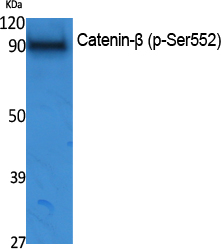
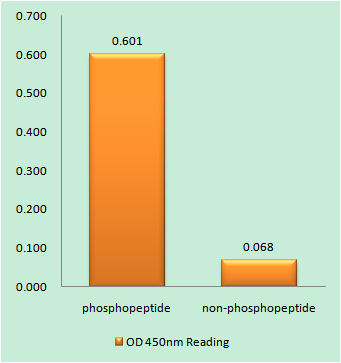
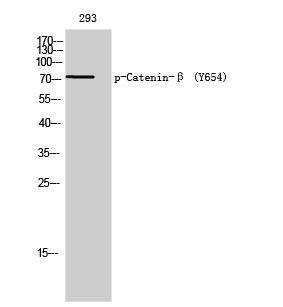
-if-45.jpg)
